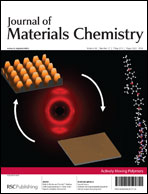We report a variety of [c2]daisy chain molecules which undergo quantitative, efficient, and fully reversible molecular movements upon the addition of base/acid in organic solvents. Such externally triggered molecular movements can induce the contraction and extension of the [c2]daisy chain molecule as a whole. A linear polymer of such a bistable [c2]daisy chain exerts similar types of movements and can be looked upon as a candidate for the development of artificial muscles. The spectrophotometric investigations of both the monomeric and polymeric bistable [c2]daisy chains, as well as the corresponding model compounds, were performed in MeCN at room temperature, in order to obtain the thermodynamic parameters for these mechanically interlocked molecules. Based on their spectrophotometric and thermodynamic characteristics, kinetic analysis of the acid/base-induced contraction and extension of the [c2]daisy chain monomer and polymer were conducted by employing a stopped-flow technique. These kinetic data suggest that the rates of contraction and extension for these [c2]daisy chain molecules are determined by the thermodynamic stabilities of the corresponding kinetic intermediates. Faster switching rates for both the contraction and extension processes of the polymeric [c2]daisy chain were observed when compared to those of its monomeric counterpart. These kinetic and thermodynamic investigations on [c2]daisy chain-based muscle-like compounds provide important information for those seeking an understanding of the mechanisms of actuation in mechanically interlocked macromolecules.
![Graphical abstract: On the thermodynamic and kinetic investigations of a [c2]daisy chain polymer](/en/Image/Get?imageInfo.ImageType=GA&imageInfo.ImageIdentifier.ManuscriptID=B924273B&imageInfo.ImageIdentifier.Year=2010)
You have access to this article
 Please wait while we load your content...
Something went wrong. Try again?
Please wait while we load your content...
Something went wrong. Try again?
![Graphical abstract: On the thermodynamic and kinetic investigations of a [c2]daisy chain polymer](/en/Image/Get?imageInfo.ImageType=GA&imageInfo.ImageIdentifier.ManuscriptID=B924273B&imageInfo.ImageIdentifier.Year=2010)

 Please wait while we load your content...
Please wait while we load your content...